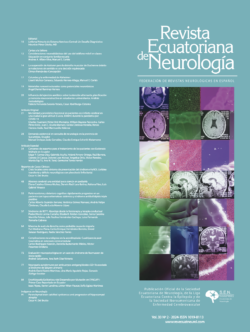Introduction: Risk factors for ischemic stroke have been extensively studied. However, few studies have been conducted in populations residing in high-altitude cities, where acclimatization processes cause elevations in blood viscosity. Our objective is to evaluate the association between blood viscosity and ischemic stroke in patients residing at altitude and to identify the most frequent subtype of ischemic stroke among these patients.
Methods: This case-control study was conducted in a hospital in Cusco, Peru (3,399 m) and included patients with and without ischemic stroke. Patients were included in the ischemic stroke group (cases) after having had up to three days of confirmed illness. The control group comprised patients hospitalized for other causes. Blood viscosity (in centipoise [cP]) was measured using a cone/plate viscometer. Viscosity data are reported as medians with interquartile ranges (IQR), and associations were evaluated using logistic regression with odds ratios (OR).
Results: A total of 386 patients were included, of which 141 (36.5%) had ischemic stroke. The median age was 67 years (IQR 52-80), and 165 (42.7%) patients were women. Blood viscosity was significantly higher in the ischemic stroke group (5.9 cP; IQR, 5.2–6.8) than in the control group (5.5 cP; IQR, 4.9–6.1; p<0.001). An increase in blood viscosity (in 1 cP increments) was associated with an increased risk of developing ischemic stroke (OR 1.40; 95% confidence interval, 1.16–1.69; p<0.001). Patients with the small-vessel occlusion subtype had the highest blood viscosity (6.1 cP; IQR, 5.8–6.3), which was significantly higher than in patients without stroke (p=0.002) or with other ischemic stroke subtypes (p=0.03).
Conclusions: Patients with ischemic stroke residing at high altitudes have higher blood viscosity than control patients regardless of ischemic stroke subtype, although the small-vessel occlusion subtype corresponded with the highest blood viscosity.





